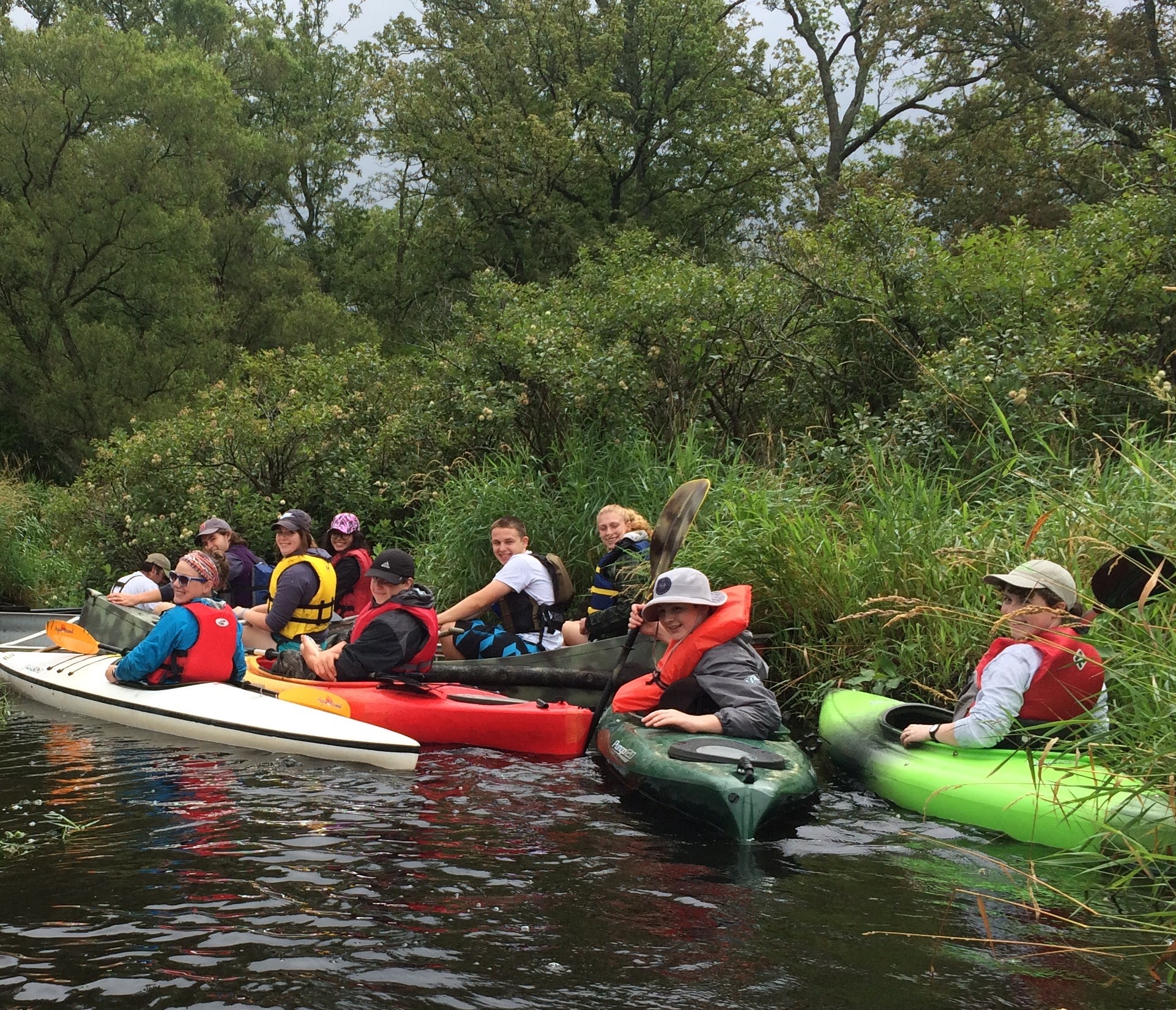In Wildlands Trust’s third summer hosting Green Team, the program nearly triples in size and capacity, cultivating the next generation of environmental leaders.
With the summer of 2017 came the third consecutive Green Team program at Wildlands Trust. Each summer, we select teens from across Southeastern Massachusetts for this labor-intensive, career exploration internship that exposes them to conservation related work happening in the region. With a four part focus on land stewardship, agriculture, wildlife conservation, and water quality, staff at Wildlands Trust take the team to cut new trails, track wildlife, test water quality, help with farm work, and more at Wildlands properties and in partnership with other local organizations.
This year marked the first year of expanding the Green Team to include middle school aged students as well as high school aged with the addition of “Green Team 1”, a one-week volunteer program for ages 12 – 14. The two-week “Green Team 2” internship was reserved for ages 15 – 18, involving more intensive field work, longer days, and an overnight campout.
The 2017 Green Team program involve a total of 17 students from our local communities! In previous summers Green Team had six and then seven students involved. The addition of a middle school age group, offering a shuttle from Brockton High School, promotion with Healthy Plymouth, and word of mouth all seemed to contribute to the growth and success of this program in 2017.
This year’s crews were led by Rachel Calderara, Program Coordinator, and Maura Coughlin, Education and Stewardship Assistant. Rachel helped to start the Green Team program in 2015 as a MassLIFT AmeriCorps member at Wildlands Trust, and now takes the lead on planning and executing the program as a full time staff member. Maura, a student at Simmons College, was a Green Team crewmember in 2016 and now helps to plan and execute the Green Team and other educational programs, as well as help steward properties as a seasonal employee.
We would like to congratulate the students on a job very well done this summer! Our hope is that exposure to environmental learning and volunteerism will promote responsible land use and inspire the next generation of leaders to protect our natural resources. Thank you to our sponsors at Rockland Trust and The Dorr Foundation for making these programs possible year after year, to Union Point for their generous sponsorship, and to all of the individuals and organizations that hosted the crew this July! We're already looking forward to next year!
Green Team 1:
Day One: Trail cutting at Pickerel Pond Preserve and Emery Preserve, Plymouth
Day Two: Trail work and tour of New England Wildlife Center, Weymouth
Day Three: Organic farming at Bay End Farm, Bourne
Green Team 2:
Day One: Bench building in the Wildlands workshop and Geocaching at Emery Preserve, Plymouth
Day Two: Water quality testing and birding with Herring Ponds Watershed Association, Plymouth
Day Three: Trail building at Union Point, Weymouth
Day Four: Blanding’s turtle tracking using radio telemetry with Mass Wildlife, West Bridgewater
Day Five: Garlic harvesting at Bay End Farm, Bourne
Day Five, pm: Team campout at Old Field Preserve, Bourne.
Day Six: Campout cleanup and organic farming at Bay End Farm/Old Field Preserve, Bourne




























